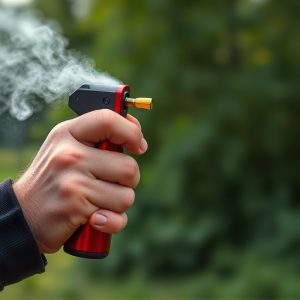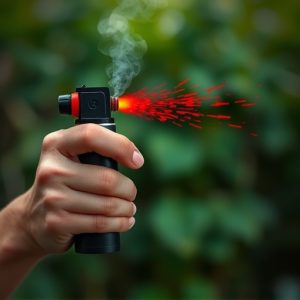Low Light Pepper Spray Tactics: Designing & Deploying for Optimal Control
In low-light conditions, effective riot control using pepper spray demands adapted strategies. Law e…….
In low-light conditions, effective riot control using pepper spray demands adapted strategies. Law enforcement must utilize illuminated tools, understand light reflection, and practice simulated low-light scenarios for precise deployment. Strategically designed, compact, and durable riot control spray dispensers with advanced triggers enhance officers' abilities to navigate crowds and target rioters' sensitive areas without causing excessive harm. Rigorous training in low-light tactics, focusing on hand-eye coordination and de-escalation strategies, ensures safe and effective use of this technology during night operations or incidents involving smoke or fog.
“Uncovering the power of low light pepper spray tactics, this comprehensive guide explores an essential tool in riot control—the inflammatory riot control spray dispenser. From understanding challenging low-light conditions to mastering the role of pepper spray and its safety protocols, we delve into effective deployment strategies. We examine the design elements crucial for optimal performance and provide tactical applications tailored for success in complex environments. Furthermore, training and preparation methods are highlighted to ensure safe and efficient use.”
- Understanding Low Light Conditions: Strategies for Effective Deployment
- The Role of Pepper Spray in Riot Control: Safety and Strategy
- Designing the Dispenser: Key Features for Optimal Performance
- Tactical Application: Techniques for Success in Challenging Environments
- Training and Preparation: Ensuring Safe and Efficient Use
Understanding Low Light Conditions: Strategies for Effective Deployment
In low light conditions, such as during nighttime or in enclosed spaces with minimal natural lighting, effective deployment of riot control spray becomes more challenging. Law enforcement and security personnel must adapt their tactics to ensure maximum impact and safety. Low light pepper spray tactics involve strategic use of illuminated devices, like laser sights or flashlights, to accurately target and disable rioters. These tools can help overcome the reduced visibility, enabling operators to quickly deploy the spray effectively.
Additionally, understanding the properties of low light environments is crucial. Reflecting surfaces, such as walls or floors, can bounce light around, potentially illuminating areas that would otherwise be shadowy. This knowledge allows for better positioning and aiming, ensuring that the pepper spray reaches its intended targets even in challenging lighting conditions. Practice in simulated low light scenarios can significantly enhance operators’ proficiency, making them ready to deploy riot control spray with precision and effectiveness.
The Role of Pepper Spray in Riot Control: Safety and Strategy
In the arsenal of riot control strategies, low light pepper spray tactics have emerged as a potent tool. Pepper spray, primarily composed of capsaicin, is an effective irritant that temporarily incapacitates individuals by targeting the eyes and respiratory system. Its utility in low light conditions—such as during night-time protests or indoor gatherings—is undeniable, as it allows law enforcement to maintain control without escalating to more destructive means.
The strategic use of pepper spray involves careful consideration of safety and environmental factors. Training is crucial for officers to ensure they deploy the spray accurately and responsibly, minimizing harm to bystanders and respect for human rights. Low light conditions necessitate advanced training in visual aids, communication protocols, and understanding crowd dynamics to maximize the effectiveness of pepper spray while maintaining a balance between control and de-escalation strategies.
Designing the Dispenser: Key Features for Optimal Performance
When designing a riot control spray dispenser, particularly for low light pepper spray tactics, several key features ensure optimal performance. A compact and lightweight design is paramount; officers need to move swiftly in confined spaces, so a manageable size that doesn’t encumber their movements is essential. Additionally, advanced triggers tailored for low-light conditions are crucial. These can include motion sensors or heat-sensing technology to accurately deploy the spray even in dark environments.
Durability and reliability are also vital. The dispenser must withstand extreme conditions, including potential impacts and rough handling, without compromising functionality. Water-resistant and shockproof materials ensure its longevity on the front line. Moreover, a clear, visible indicator for remaining spray volume allows officers to make informed decisions during high-pressure situations, maximizing tactical efficiency in low light pepper spray deployments.
Tactical Application: Techniques for Success in Challenging Environments
In low light or challenging environments, law enforcement and security personnel require specialized equipment to maintain control effectively. This is where low light pepper spray tactics come into play, enhancing visibility and disorienting rioters or aggressors instantly. The tactical application involves strategic deployment of the spray dispenser, which can be crucial in subduing violence swiftly. By utilizing these low-light techniques, officers can navigate through dense crowds, dark alleys, or obscured areas with improved accuracy and safety.
The success lies in the operator’s ability to target key points on the body while minimizing collateral damage. In such conditions, a well-designed riot control spray dispenser offers precision and control, ensuring a swift response that stops riots without causing excessive harm. This is particularly vital during night operations or incidents where rioters employ tactics to obscure light and visibility.
Training and Preparation: Ensuring Safe and Efficient Use
Training and preparation are paramount for effective and safe deployment of inflammatory riot control spray dispensers, especially in low light conditions. Law enforcement officers and security personnel must be schooled in Low Light Pepper Spray Tactics to maximize the impact and minimize risks associated with its use. This includes understanding different lighting scenarios, such as night-time operations or environments with heavy smoke or fog, where visual clarity is diminished.
Special focus should be on proper hand-eye coordination for accurate targeting, as well as tactics for navigating through crowds and challenging terrain. Simulated training exercises under low light conditions can help officers become more proficient in quickly deploying the spray while ensuring minimal harm to bystanders. Regular practice sessions reinforce these skills, enabling quicker response times and enhanced safety for both the operators and those they protect.
In conclusion, low light pepper spray tactics have become indispensable tools for law enforcement agencies worldwide, offering a safe and effective means of riot control. By understanding the unique challenges of low-light conditions, leveraging the safety features and strategic applications of specialized inflammatory riot control spray dispensers, and ensuring proper training and preparation, first responders can efficiently navigate and de-escalate volatile situations. These tactics not only protect both officers and citizens but also foster a more secure and harmonious societal environment.


